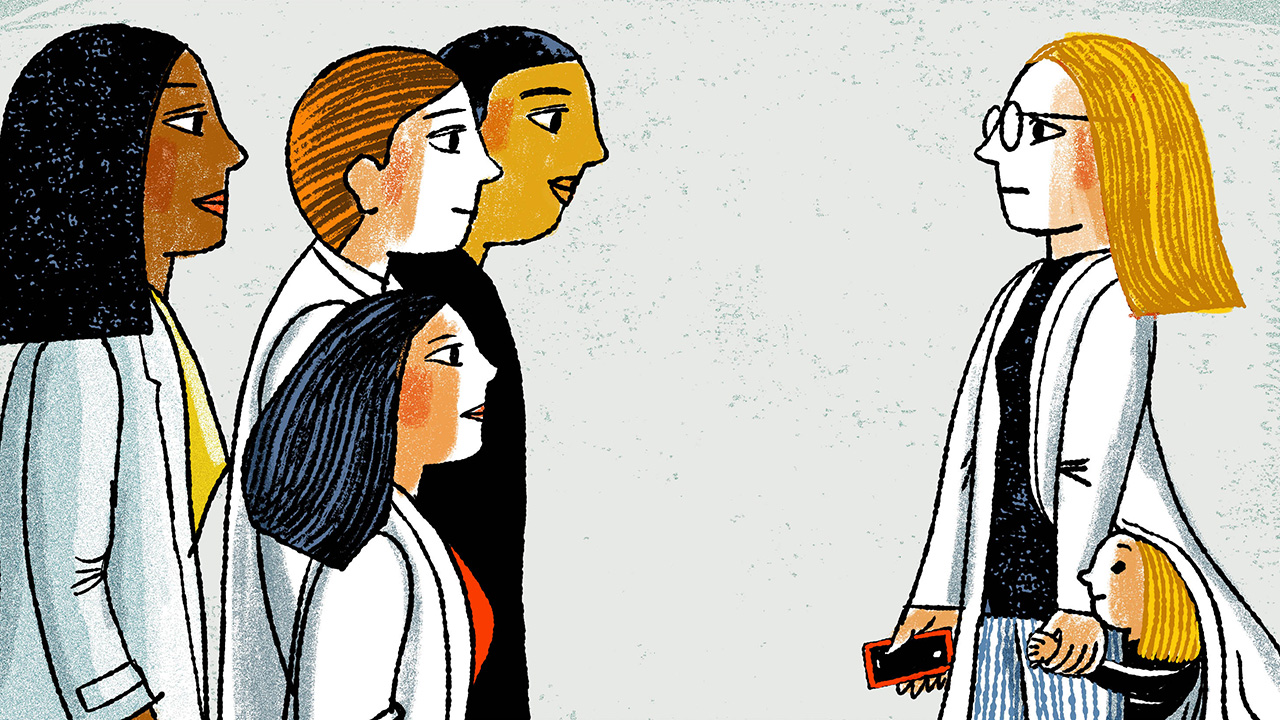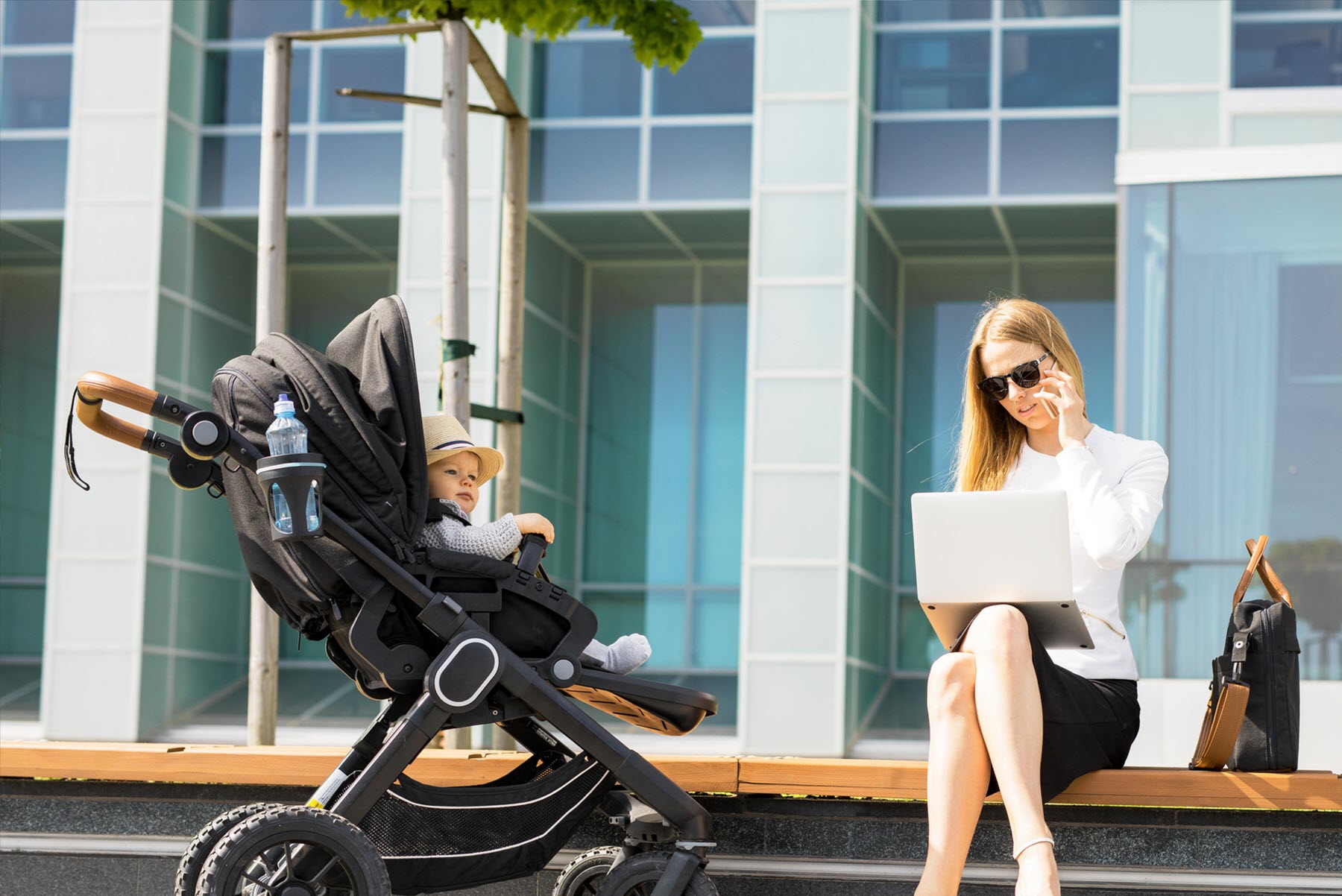By Erika Koutroumpa,
Being a mother is one of the hardest jobs in the universe. It has barely been half a century since women working after giving birth started becoming the norm in the western world. However, this begs the question; have mothers achieved gender parity with their male counterparts in the workforce and what is keeping them behind?
There is a large amount of supporting evidence showing that birth largely influences the fate of a woman’s trajectory in the workforce. Surveys have shown that a mere 29% of first-time mothers and less than 20% of all new mothers actually pursue a full-time job post the birth of their child. The vast majority of expectant mothers who are working full-time end up quitting their job or reducing their hours to work on a part-time basis. Roughly 45% of women returned to and kept on working for five years after birth, with the number decreasing to 35% over 5 years.

In comparison with prior years, the percentage of working mothers has increased at a slow yet steady rate. Nevertheless, there is still a long way to go, especially when comparing the statistics to those for men who still play an active part of the workforce despite having children. In contrast with the statistics for women, the men most likely to actively partake in the workforce are fathers, with a stunning participation rate of 93.5%. With the vast majority of fathers working and around half of mothers staying at home, it becomes evident that there is an unequal division of care and domestic responsibilities at home, creating further inequalities in labour market participation.
According to a UN women 2020 survey, about 113 million women aged 25–54, with partners and small children, were out of the workforce for that year. Moreover, for many women, care pressures forced them to leave the workforce altogether, or to reduce their working hours, while others switched jobs in favour of work offering more flexibility and shorter commutes. What is more, based on a study on heterosexual couples by the institute for Fiscal Studies (IFS), it was found that 13% of relationships where women earned more than their partners before parenthood, the women left work after having a child, compared to just 3% of similar relationships where the lower-paid male partner left work. Higher paid women also had to reduce their paid hours by 26%, when men suffered no hour reduction regardless of their income prior to the birth of the child.
Being able to predict whether a woman is likely to return to work after becoming a mother is not an easy task, as it is controlled by a multitude of factors. To begin with, employment status prior to having a child can be of significant importance to this purpose, as females working full time prior to having a child are roughly 8 times more likely to return to employment compared to part-time workers. Highly educated women with a graduate or professional degree who gave birth recently are more likely to be employed and less likely to be unemployed or or out of the labour force entirely, compared to all other women with a recent birth. More specifically, 71.2% of American women with a graduate or professional degree who gave birth in the last 12 months were in the labour force working, 9.2% were on leave and only 1.5% are unemployed. In other words, the lower the education level the lower the chances of returning to work post giving birth. Additionally, culture is of pivotal importance as well, since it is found that having a mother working until the age of 14 can create a positive role model for the future mother, doubling the likelihood of being employed. While unemployment patterns are not influenced by the age of the expectant mother or their marital status, it has been found that employment status is more important of a determinant to their future in the workplace. Also, half the amount of women were promoted after birth compared to men and instead staying with the same employer shows increased chances of downward mobility in the company ladder.

Furthermore, the pandemic seems to have played a significant role in the percentages, with an increase of non-working mothers coinciding the outburst of COVID 19. Retention of female parents in the workforce post having children also largely varies between countries, with percentages being higher in states that have implemented policies such as prolonged parental leave, online appointments and remote work.
A peculiar phenomenon happens to take place in the USA due to aforementioned regulation. Comparatively with other countries, laws for maternity are rather underdeveloped. The US is one of the only 3 of the most developed countries in the world not to offer statutory paid maternity leave (only 17% have access). The American College of Obstetricians and Gynecologists (ACOG) recommends women take at least six weeks off work following childbirth. But with no federally mandated paid family leave, for many women maternity leave is an unaffordable luxury. What is more, the exorbitant hospital fees many are left with no choice than to return to work, affectingthe parent’s relationship with the children in the early stages, but also the woman’s health is put at risk.
This begs the question; what can be done to increase retention of mothers in the job market? Family-friendly working arrangements for both parents, including telework, flexible start and finish times, time-banking and the ability to work compressed work weeks, more inclusive and adequate paid leave provisions are a good way to start. Furthermore. A change of mentality is needed, promoting gender equality in taking care of family affairs from an early age, as well as by addressing discrimination based on motherhood, including by removing legal barriers for women entering, remaining and progressing in the workforce, promoting women’s participation in managerial and leadership positions. It is also important to include protection measures for pregnant women, such as job security and basic social protection, to ensure that there will not be any rushed returns back to work, giving time for the mother to heal and bond with their child in the first critical 1000 days of life. Lastly, access to affordable and quality childcare, education and school meal services, including as an example on-site childcare would ease the mind of many parents.
Investing in family friendly policies benefits families, businesses and economies alike. Women have a lot to contribute to society via their work, but are often stopped from doing so due to having too many responsibilities between their job and their home, making them choose one of the two. But women should not have to go through this dilemma and through changes both on our outlook as a society and with the proper reforms in the work environment, parity between the two parents as far as the professional sector goes will be achieved.
References
-
I was risking my life’: why one in four US women return to work two weeks after childbirth”, Miranda Bryant, 27 January 2020, theguardian.com. Available here
- “More than 2 million moms left the labour force in 2020 according to new global estimates”, data.unwomen.org. Available here
- “Among recent moms, More Educated Most Likely to Work”, Brian Knop, 19 August 2019, census.gov. Available here
- Employment pathways and occupational change after childbirth, Susan Harkness, Magda Borkowska and Alina Pelikh. UK Government Equalities Office Publications.
- “The role of the workplace in supporting positive and gender-responsive parenting” Jemma Maree Galvin, unicef.org. Available here




